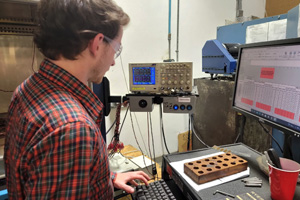- info@motionsensors.com
- Monday - Thursday: 8AM to 5PM EST
- 252-331-2080
Speed Sensor Modification
Modification of Standard Speed Sensors
The product listings you find on this website are meant to provide a “snapshot” of standard product offerings. By no means are they meant to be a comprehensive listing of speed sensor models and options. Many customers identify a speed sensor with the basic features required but need some aspect of the sensor design “tweaked” or changed slightly. Motion Sensors typically does not consider this a custom design, but rather a modification to an existing design. Lead-time and cost increases are in many cases minimal. Below is a quick reference of these standard modifications. For more extensive design changes, see Common Areas of Customization or contact us at eng@motionsensors.com.
Addition of Pigtail Leads or Cables
Many of our standard sensor designs incorporate the use of a MIL series connector. All of these designs can have pigtail leads or a cable added to them. Standard options are #22AWG Teflon leads or a #24AWG PVC or Teflon cable (depending upon temperature range). Custom wire/cable can be added per customer request. Standard lead length is 12” but can be set per customer specification.
Thread Length/Size
Our standard product lines reflect the most common thread lengths and sizes. That being said, we have made hundreds of modified offerings that are not represented on the website. Common modifications include the use of metric threads, as well as an increase in the thread length and/or OAL. Please do not hesitate to communicate your requirements to our sales staff and we will see if we have something that will meet your needs or will modify to your exact specifications. These types of modifications may incur additional charges, especially in lower volumes (e.g. 2-3 pieces) due to the machine setup times involved in machining a custom body.
Tip Size
Our standard Variable Reluctance sensors are shown with the most common tip length and diameter. However, many customers require modified versions of these sensors, with different size tips, flush fronts, or in some cases special shapes such as a conical tip to sense an extremely fine gear.
Gauss Strength
Depending upon application design, gauss levels may need to be modified to minimize drag. Drag is the influence of a speed sensor’s internal magnet on the target. Usually drag does not affect target devices like gears, shafts, or rotors that are being driven. However, in applications like turbine flow metering where the turbine blades are free spinning and turn based on the pressure and flow of the fluid or gas flowing through the meter, drag could retard or hinder its ability to turn freely. This is especially true in small diameter meters and low flow applications. Motion Sensors makes specially designed low drag versions of our variable reluctance (VR) speed sensors. If drag is of great concern, we also offer modulated carrier (RF) sensors which have absolutely no drag and are ideally suited for low flow applications or where maximum turndown ratios are desired. Additionally, we can provide sensors with gauss strength set to a specific level in order to meet application requirements.
Please note that the gauss value measured is dependent upon the probe style used and the location of the sensing element in the probe. Many times, we find it necessary to “calibrate” our gauss measurements to our customers to ensure that the values are consistent, by taking sample measurements and correlating with customer data for that specific sensor.
Hermetic Sealing
Many of our standard products are offered in epoxy encapsulated models which provide the most cost-effective option. However, some applications require the use of a hermetically sealed device to protect against moisture intrusion. Our hermetically sealed devices incorporate the use of a welded seam at the sensor tip or the use of a solid stainless-steel sensing front. The connector is a glass to metal sealed unit that is welded to the sensor body. Almost all of our standard speed sensors can be provided in hermetically sealed models.

